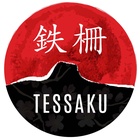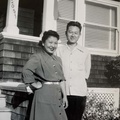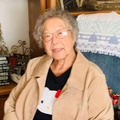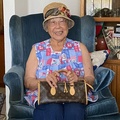In the morning you take off, and you don’t come back or see your parents until you go to bed. You went whenever you wanted to. And you don’t tell anybody what you’re doing during the day. What a painful thing it was, and must have been, for the Issei group.
— Tadashi Tsufura
Growing up in a little farming town in California, Tadashi Tsufura likely never envisioned the influential life he would lead. After they left the internment, his family moved to the other side of the country in Seabrook, New Jersey. He went on to serve in the Korean War and worked briefly as a chemical engineer. After moving to New York City to change careers he fell into, and in love, with teaching. In 1976, Tad would become the first Japanese American principal of a public school in New York; all of which came with its own set of difficulties. “ No one wanted Japanese as educators and all the unions here battled to keep me off,” he says. But his skills as a teacher, and the respect he cultivated inside the classroom continues to resonate with his past students who still call him to have lunch and catch up. As both of his parents were teachers and community leaders, it would seem that Tad was destined to go into education.
But the consequences of internment, the health effects of hard physical labor in the cannery and the war itself would take a serious toll on his mother’s health. Tad’s brother was waiting to be drafted into the U.S. army while Tad’s cousin in Japan was a kamikaze pilot. The weight of such dissonance wore her down into a deep depression, for which a doctor prescribed a lobotomy. Tad wrote about his mother’s illness in a statement to a Commission on the internment in 1981. “Neither my father nor I questioned the authority or professional wisdom of the doctor. Now I know the operation is irreversible and was then in the experimental stages. I wonder if an informed citizen would have allowed this fate for his parent. I must live with this trauma and regret.”
Tad is 86 years old and still lives in New York with his wife. We spoke over the phone.
Tell me about your background and where you grew up.
I was born in Los Angeles, California and my father was a minister there. He was a rebel-rouser and as a minister of a Buddhist church. And he got in a battle with a bishop there so then he had to leave.
We moved to a little town called Parlier, California, about 20 miles from Fresno. It was farm country at that time, mostly grape and vegetables grown by the Japanese farmers. My dad became a minister of that small town. My mother was a teacher so they started a Japanese school there, too. During the summer we had to make some money so as a family we did field work. Parlier was predominantly a very powerful Japanese community. California needed workers so Japanese came and worked.
At that time, you have to recall that the government was all powerful. No one questioned the government. The Mexicans worked wherever they could and the Japanese worked with whoever hired them. That’s how American segregation worked at that time. You worked and lived where you were allowed to.
How did your parents originally end up in California?
My father was here before. He went back to Japan to get married and he came back. My father initially came alone in 1920, I think as a minister. Japan was starving so they allowed workers to immigrate all over the world.
What happened in your town when the war broke out?
I was in elementary school when the war started you know. And we were all friends. When the war started, next day we went to school and they were making fun of us saying, ‘Hey you’re a Jap, you’re an enemy’ and I knocked a kid down. The principal came and knocked me down. Those things I still remember but I also had a pretty good teacher. Once the war was going on I was a sixth grader and this guy did everything in the world to make our lives as pleasant as can be. We had a restricted time, we couldn’t leave the house after 5 ‘o clock at night. But this teacher, Mr. O’Connell, I still remember. He was terrific. Those are the people you try and be like.
Do you have one specific memory or story about being in Gila River?
While we were in camp, we lived in one room. Initially we went to the mess hall to eat with our parents because we didn’t know anybody. But as we grew accustomed to the camp, we stopped going with our parents and we went as soon as we had our own ticket to go eat. And one of the things that I regret now for not really knowing was how painful it must have been for all of the parents because they lost control of their kids.
The only thing you had to do was go back to the room to sleep. And in the morning you take off, and you don’t come back or see your parents until you go to bed. You went whenever you wanted to. And you don’t tell anybody what you’re doing during the day. So, in retrospect I’m saying, what a painful thing it was, and must have been, for the Issei group.
I know you wrote about what your mother went through. Can you talk about what happened and her depression?
When the war started, my oldest brother was waiting to be drafted into the army. Then my father’s brother in Japan had sons about the same age as my oldest brother. And one was in the kamikaze.
For my mother, for one to fight the other, she couldn’t deal with it. And she couldn’t deal with people calling her the enemy. And she couldn’t deal with working in the factory, sometimes 12 hours a day. She was not a strong woman. Also, I’m a stupid 14-year-old at Seabrook and I don’t have the ability to do things like wash my own clothes and things. She was doing that. Learning to cook on a coal stove that we’d never used before, trying to keep the house warm by coal heat. Go shopping for food. Cooking and trying to keep the house clean, and it was just too much for any woman, I think. Especially a weak woman. Physically, my mother was not strong. And it just took its toll. But then I was too young to really realize, you know.
To realize what was happening?
How much help she needed or what was happening, yeah. And remember at that time, no one sued doctors so when the doctor said hey, she’ll be cured by having a prefrontal lobotomy, who in the hell knew what that was? And we agreed. They just put a paper in front of you and you sign it. But I learned later on that it was an irreversible kind of thing.
What was the effect of that on your mother?
Well you know, there was no curing. Because it’s irreversible, also it affects your mind so that it doesn’t move your way. And curing is an impossibility after such an operation. The prefrontal lobotomy cuts away certain parts of your brain from functioning.
This is the full statement Tad wrote about his mother for the New York hearing to the Commission on Wartime Relocation and Internment of Civilians in 1981:
Within a month of being ‘freed’ from the relocation camp in Gila River, Arizona, my mother, who had to do hard manual labor in the cannery, broke down and was committed to a mental hospital in Trenton, New Jersey. There was not one person in the institution who could speak Japanese or work with her. Because of this lack of communication, I had to make a painful weekly trip to help and interpret. The pain was compounded by the lack of understanding of depression as an illness at the time, particularly in my culture. When the doctor at the hospital said my mother needed an operation (a lobotomy), I thought it would help make her well, and neither my father nor I questioned the authority or professional wisdom of the doctor. Now I know the operation is irreversible and was then in the experimental stages. I wonder if an informed citizen would have allowed this fate for his parent. I must live with this trauma and regret.
I do not wish to tell the Commission of the personal trials and the difficulties I encountered in attaining my current position as principal. I can only assure you that my sufferings were minute when compared with those of our immigrant parents. They were forced to leave the relocation camps, most with little or no money, and with little or no ability to communicate in the new hostile environment. I look back in awe at their courage and strength.
*This article was originally published on Tessaku on March 15, 2017.
© 2017 Emiko Tsuchida







